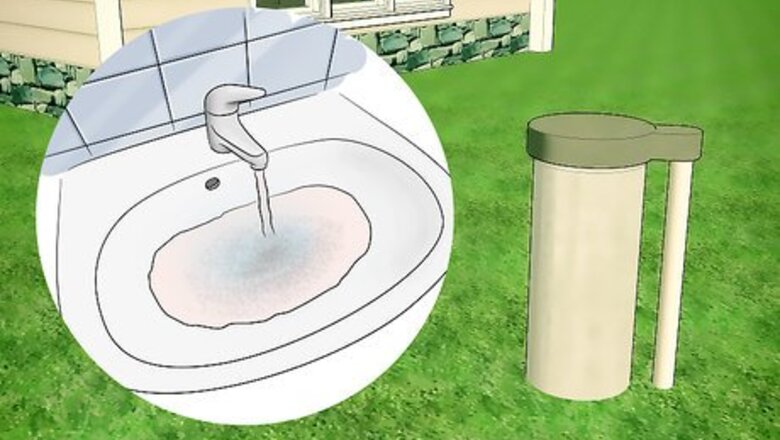
views
X
Research source
One effective treatment for this is to add chlorine bleach to the well water, which will kill the bacteria. This process takes a day or two, so it's best to prepare yourself for minimal water usage.
Preparing to Chlorinate
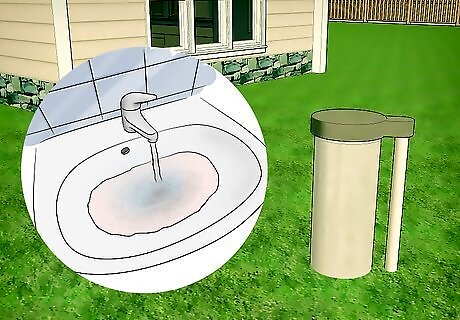
Know when you need to chlorinate your well. It is a good idea to chlorinate your well at least once a year, preferably in the spring. Outside of that, there are several other circumstances under which chlorinating your well becomes necessary: If your annual water test results show that bacteria is present. If you notice a change in the color, smell or taste of your drinking water, you should test for bacteria and will need to chlorinate the water if the test comes up positive. You should also determine the water constituent that caused the change in water quality and take measures to treat the water to remove anything unpleasant or unsafe. Your local environmental agency will be able to provide direction in this endeavor. If the well is new, or has recently undergone repairs, or new pipes have been added. If the well has been contaminated by flood water, or if the water turns muddy or cloudy after a rainfall. When you are preparing to abandon the well or if it is a well that is new to you.
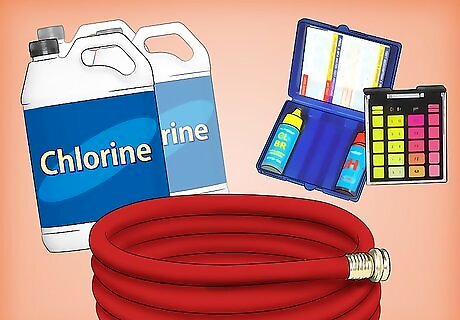
Gather the necessary supplies. Chlorine: Obviously you will need chlorine in order to chlorinate your well. You could use HTH chlorine tablets or granules, but this article assumes that you are using a 5% solution (or greater) of regular household chlorine bleach. Just be sure to use an unscented variety. You may need up to 10 gallons (37.9 L) of bleach, depending on the volume of water within your well and the strength of the bleach. Chlorine test kit: A chlorine test kit can be used to precisely measure chlorine levels in the water, rather than relying on scent alone. These test kits are usually used for swimming pools and can be found at any pool or spa supply store. Make sure to get OTO liquid drops instead of the paper strips, as the paper strips only indicate chlorine levels in the range that is ideal for swimming pools. Garden hose: To recirculate the water in the well, you will need a clean garden hose. Some sources recommend using a hose with a ⁄2 inch (1.3 cm) diameter, rather than the standard ⁄8 inch (1.6 cm) size. If you can get the larger hose through the wellhead casing and past the wiring and piping, it may be a better option, as it will provide a larger flow of water. You should cut the male end of the hose at a steep angle.
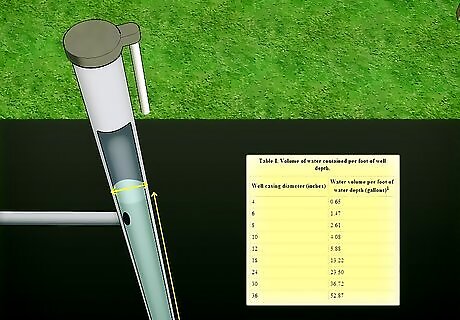
Calculate the volume of the well. In order to determine how much bleach you will need to adequately disinfect your well, you will need to calculate the volume of water it contains. To do this, you will need to multiply the depth of the water column (in feet) by the gallons per linear foot for your well. This depends on the diameter of the well or casing (in inches). To get the depth of water in your well, you will need to measure the distance from the bottom of the well to the waterline. First, shut off all power for the wellhead at the breaker. Remove the well cap or access the wellhead through the venting opening. Use a strong flashlight to inspect down the casing. Using a fishing line and a moderately heavy weight, drop the line into the water. The line will remain taut until the weight hits the bottom, at which time it will go limp. Once this happens, retrieve the line and measure the wet portion of the string with a tape measure. You can also mark the line at the top of the well casing and measure the total depth of the well, then subtract the distance from the top of the casing to the surface of the water within the well. This can be found by tying a short stick securely to the line, lowering the stick into the well, marking the line when it goes slack, and measuring the length of the line from the stick to your mark. Alternatively, a rough measurement should be stamped on a plate affixed to the slab poured around the well casing or you can contact the drilling company who constructed the well. They are required to keep records on all of the wells they've worked on in most jurisdictions. You can also check with the State Water Master or Governing Licensing Board of Well Drillers and Pump Installers. The number of gallons per linear foot is related to the diameter of the well casing. This number should appear on the well log. Drilled wells will usually have a diameter between 4 and 10 inches, whereas bored wells range between 12 and 26. Once you know the diameter of your well, you can use this table to figure out the gallons per linear foot of water within your well. Now that you have measurements for the depth of the water in the well (in feet) and the amount of water per linear foot in gal/foot), you can multiply these numbers by each other to get the total volume of water in your well. You will need to use 3 US pints (1,000 ml) of 5% chlorine bleach for every 100 gallons (378.5 L) of water in your well, plus an extra 3 US pints (1,000 ml) to treat the water in the household plumbing.

Plan on being unable to use the well water for a minimum of 24 hours. The process of chlorinating a well takes time, usually one to two days. During this time you will be unable to use water from the well for daily household tasks, so it is important that you plan accordingly. A good time to chlorinate is right before you leave for a weekend getaway or a more lengthy vacation. During the chlorination process there is more chlorine in your water supply than a swimming pool, making it unsafe to consume. In addition, if you use too much water, the chlorine will end up in your septic tank and kill the bacteria necessary for decomposing waste. For these reasons, you will need to use bottled water for drinking and cooking, and refrain from using any sinks or showers. You should also try to keep toilet flushing to a minimum.
Chlorinating the Well
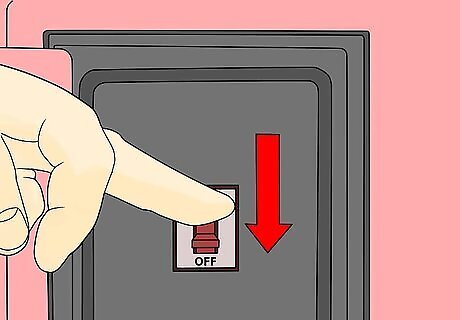
Turn off the circuit breaker feeding the pump.
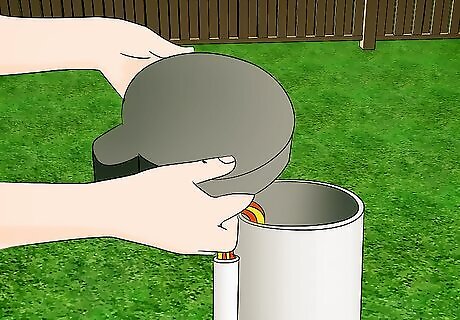
Open the vent or remove the test hole plug. Depending on the type of well, you may need to open the vent pipe in order to pour in the chlorine. The vent pipe should be located on the wellhead, it's usually about 6 inches (15.2 cm) in length and 1/2 an inch in diameter. Open the vent by unscrewing the pipe from the seal. Alternatively, you may be able to remove the cover from the top of the well, which may require removing a few screws.
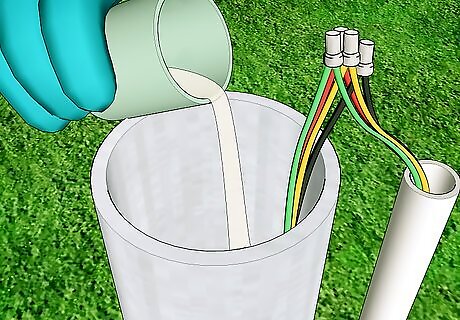
Pour in the bleach. Once you have access to the well, carefully pour the correct amount of bleach through a funnel into the access hole, avoiding any electrical connections. You may want to wear protective gloves, goggles and an apron when handling the undiluted bleach. If any bleach should get on your skin, rinse it off immediately with clean water.
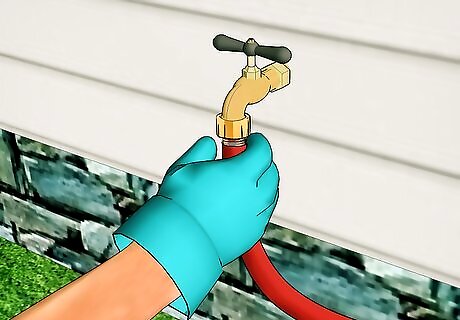
Attach the hose. Attach the female end of the hose to the nearest spigot, then run the male end (cut off at an angle) into the hole left by the vent pipe, or directly into the well. If the hose is not long enough to reach the well, connect additional hoses.
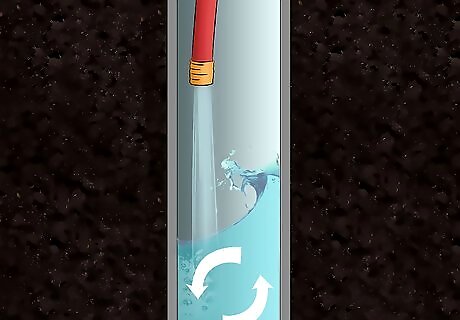
Recirculate the water. Double-check that all electrical connections are waterproof before turning on the circuit breaker, then the water on at full volume. Leave it to recirculate for at least an hour. The running water from the hose forces the water at the bottom of the well to flow to the surface, distributing the chlorine evenly. This ensures that any bacteria in the well water will be exposed to and killed by the chlorine.
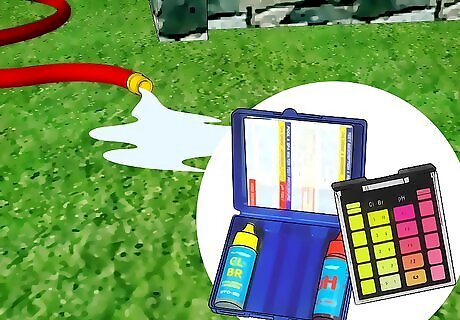
Test for chlorine. After the water has been recirculating for at least an hour, you can test for chlorine in your water supply. You can do this in one of two ways: Pull the hose out of the vent and use the chlorine test kit to test for the presence of chlorine in the water coming out of the hose. Alternatively, you can run an outdoor faucet to see if you can detect the smell of chlorine in the water. If the chlorine test comes up negative, or you cannot smell chlorine in the water supply, continue to recirculate the water for another 15 minutes, then check again.

Wash down the sides of the well. Once you have detected chlorine in the water, re-insert the hose and vigorously swirl it around to wash any chlorine residue from the well casing and pump piping. Once you've done that for 10 or 15 minutes, turn off the hose and replace well lid or reinsert the vent pipe.
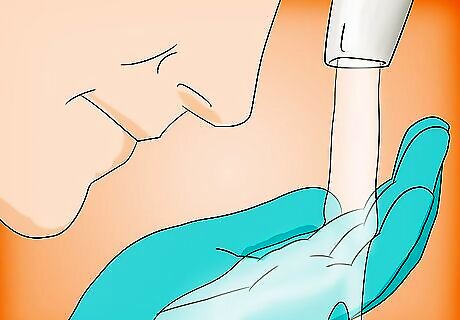
Test for chlorine indoors. Go inside and test for the presence of chlorine at every sink bath and shower, using either the test kit or your sense of smell. Don't forget to test both the hot and cold faucets and also remember to run any addition outdoor spigots until chlorine is detected. You should also flush each toilet in the house once or twice.

Wait 12 to 24 hours. Leave the chlorine to sit in the water supply for a minimum of 12 hours, but preferably 24. During this time, do your best to keep water use to a minimum.
Removing the Chlorine

Set up as many hoses as possible. After 24 hours, your water will be completely disinfected and you can begin the process of removing chlorine from your water supply. To do this, attach as many hoses as you have outdoor spigots and tie the ends around a tree or fence approximately three feet off the ground. This makes it easier to monitor the water flow. Don't run the water anywhere near the septic tank or leach field, as you don't want to expose these areas to the chlorinated water.

Run the water at full force. Turn on each of the spigots and run the water as hard as possible. Try to direct the stream of water into a ditch or somewhere the water will be somewhat contained. Just make sure that the ditch does not lead to a stream or pond, as the chlorinated water will kill off fish and other animal and plant life.
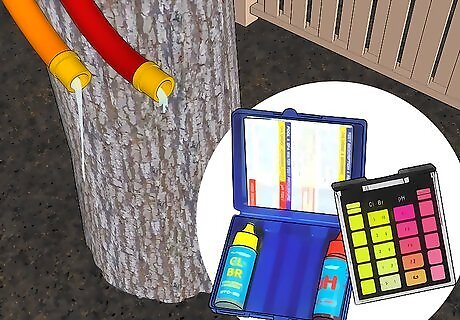
Test for the presence of chlorine. Periodically check the water coming out of the hoses for the presence of chlorine. Use the chlorine test kit for this, as you may be unable to detect small quantities of chlorine by smell alone.
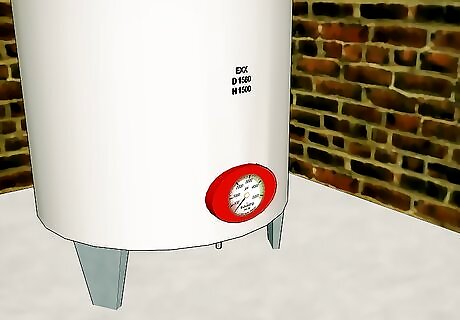
Don't allow the well to run dry. Boring as it may be, it is important to keep an eye on the water flow at all times, to ensure that the well doesn't run dry. If the well runs dry, the pump may burn out, and these can be very expensive to replace. If it looks like water pressure is dropping off, turn off power to the pump and wait an hour before resuming the run-off. This gives the well a chance to refill itself. Only stop the water flow when all traces of chlorine have been removed -- this may take as little as two hours or much longer, depending on the well.















Comments
0 comment